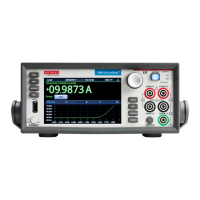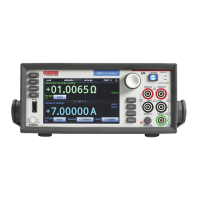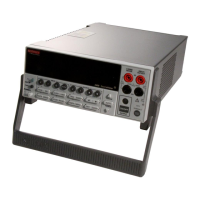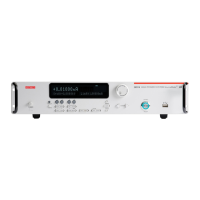2: General operation Model 2461 Interactive SourceMeter® Instrument
2-92 2461-901-01 A/November 2015
Using TSP commands:
For voltage measurements, send the commands:
smu.measure.func = smu.FUNC_DC_VOLTAGE
smu.measure.sense = smu.SENSE_2WIRE
To assign a different measure function, replace smu.FUNC_DC_VOLTAGE with one of the following:
• For current measurements: smu.FUNC_DC_CURRENT
• For resistance measurements: smu.FUNC_RESISTANCE
Four-wire remote sense connections
Using 4-wire remote sense connections provides the most accurate low resistance, voltage source,
and measurement accuracy. Specified accuracies for instrument source and measurement
capabilities are only guaranteed when you use 4-wire remote sensing.
If you use 4-wire remote sensing when you source voltage, the programmed voltage is delivered to
the device under test (DUT). If you use 4-wire remote sensing when you source current and measure
voltage, only the voltage drop across the DUT is measured.
To make 4-wire measurements, you must set the sense mode of the instrument to 4-wire, as
described in the following topics.
When you are sourcing voltage in 4-wire remote sense, connect the sense leads to the DUT. If a
sense lead is disconnected, the instrument senses 0 V, which causes it to increase the output
voltage to compensate. To further protect against overvoltage situations, you can set overvoltage
protection. See Overvoltage protection (on page 2-121) for more information.
Always connect the sense lines as close as possible to the device under test.
Figure 61: Model 2461 rear panel 4-wire remote sense connections

